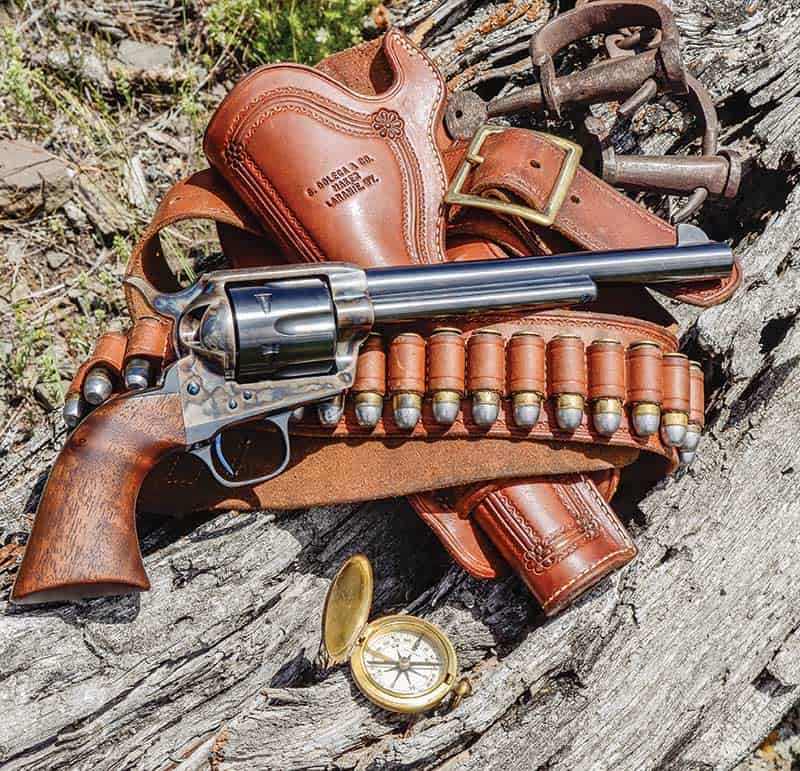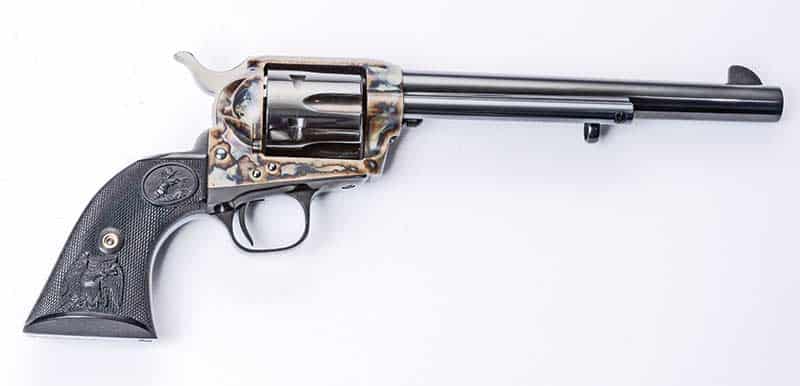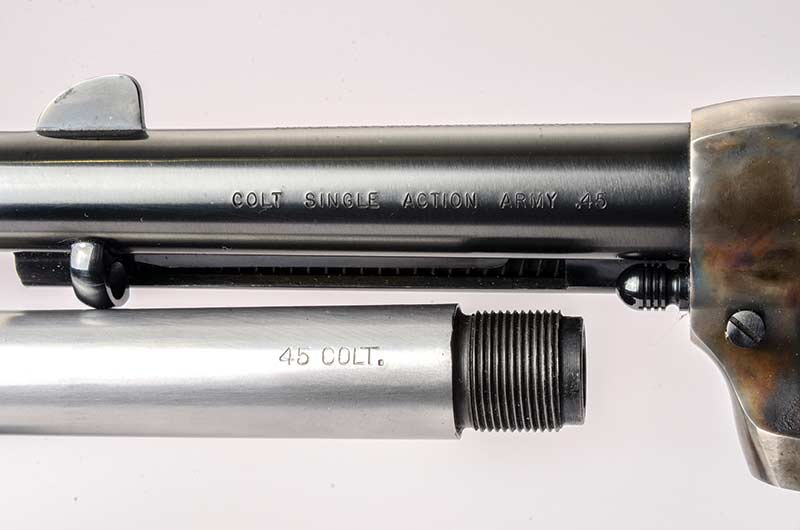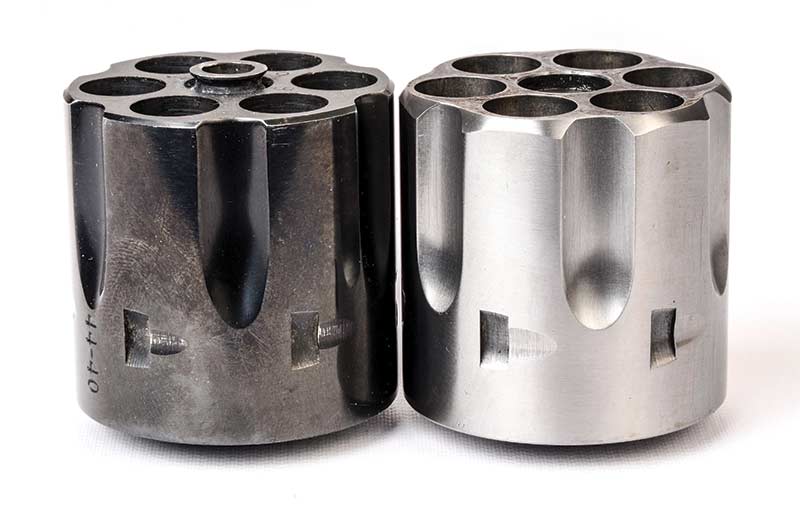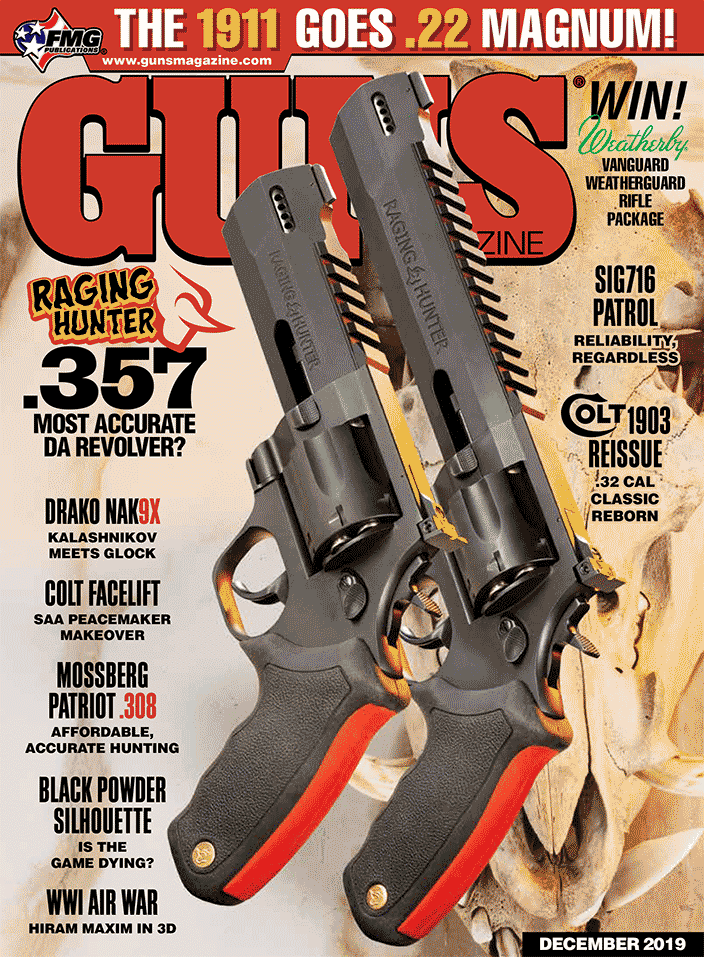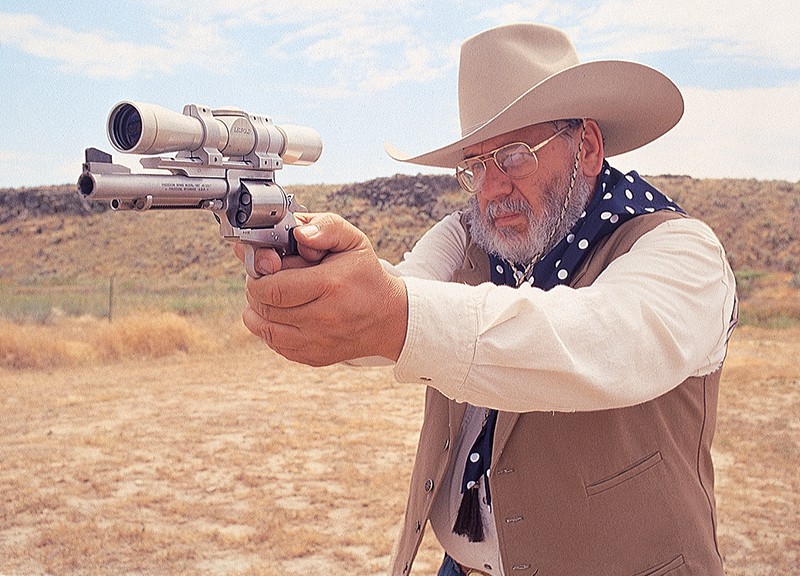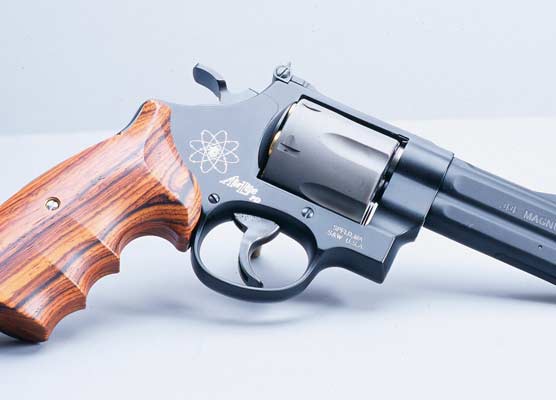Peacemaker Specialists
1880 Package
Making A Classic SAA Even Better
After 50 years of buying Colt Single Action Army revolvers in many calibers and all generations, I had never actually had one custom-made to my specs. Of course, I’ve had special ivory, bone or fancy wood grips fitted and I’ve had special-order barrel lengths such as a 3rd Generation .38-40 with a non-cataloged 4″ barrel with matching ejector rod and housing.
Going OIld-School
Recently in a conversation with Eddie Janis, head of Peacemaker Specialists located in Paso Robles, Calif., he mentioned his “1880s Package.” It consists of taking a 3rd Generation SAA with the so-called “black powder” frame and remodeling it to duplicate an 1880s Peacemaker as closely as possible. Now, I’ve been friends with Eddie for over 20 years and had him slick up the internals on a couple of Colts, and purchased items from his extensive inventory of parts for all generations. After he described the alterations for a 1880s Package, I got to thinking — “I’m now approaching my seventh decade. If I want to have a special Colt, it better get in the works.” So it did!
Let me describe the 1880s Package. Please note any of the services mentioned next can be purchased individually and the customer does not have to go for all of them.
Here’s the list — the barrel and all blued parts are cleaned of finish and markings, then restamped as they would have been in the 1880s. The cylinder flutes are lengthened and front of flutes beveled. Beveling is also done to the front of the ejector rod housing, and toe and heel of grip frame. The hammer spur is checkered and outlined and hammer is color case hardened. The other parts, after cleaning and re-marking, are then rust blued.
After the cosmetics, there is the inside of the Colt to consider. First off, I’m sad to say the internals of third Generation SAAs are often a mess. They usually function OK but most specimens are gritty and heavy when cocking the hammer. Likewise with the trigger pull. Cylinder looseness is a gripe often mentioned by new buyers.
Peacemaker Specialists makes all those problems go away. When I received my gun back, its action was remarkable. Cocking the hammer made me wonder just how it could be so smooth and light, without any sideways wobble the 3rd Generation hammers sometimes have. Trigger pull was right about 3 lbs. with absolutely no creep or grit and the cylinder — how can it be so tight, both with hammer cocked and at rest? There is not one iota of shake either laterally or fore and aft. It baffles me.
Stocking Up
When it comes to handgun stocks, I’m a bit of a nut job. Hardly any of my handguns wear factory issue stocks except the military collectibles. Factory stocks are usually too thick, too thin or just too ugly for me. Contrary to many Peacemaker lovers, I’m not big on ivory stocks as a grip material although I do have some. Bison bone is a great material for SAA stocks but the fellow who made mine is now deceased. The truth of the matter is I’m simple in my tastes and prefer good American (black) walnut. I instructed Eddie to use ordinary straight grain walnut as Colt would have used circa 1880 and to make them one piece as Colt did. They fit perfectly.
I didn’t go for one service offered by Peacemaker Specialists — a new cylinder, made by rechambering a smaller caliber cylinder so the chamber mouths match .45 Colt barrel groove diameter. Colt SAA .45s have 0.451″ barrel groove diameter as standard but their cylinder chamber mouths usually run 0.455-457″. The redone cylinders offered by Peacemaker Specialists have 0.452″ chamber mouths. For years, I’ve preached against Colt putting those huge chamber mouths in .45s, so why didn’t I go for the smaller size with this SAA?
The answer is logistics. I have a dozen other .45 Colt revolvers, most with those huge chamber mouths. My .45 Colt handloading is usually with softer 1:20 tin-to-lead alloy bullets sized to 0.454″. This system gives more than adequate accuracy from all my .45 sixguns. Thus, I wanted to leave the cylinder chamber mouths of this special .45 the same dimension so I didn’t have to load different .45s rounds for it.
Of Pins And Locks
From introduction in 1873 until the mid-1890s, Colt Peacemakers had their cylinder base pins secured by a screw angling in from the front of the main frame. In the 1890s, Colt began phasing this system out in favor of a transverse spring-loaded lock. Somehow, the first system got the moniker “black powder frame” although Colt did not guarantee SAAs for smokeless powder ammunition until 1900. Therefore both frame styles were actually sold prior to the smokeless powder warranty.
Regardless, for Peacemaker Specialists to do a true 1880s package the customer must supply them a “black powder frame” sample on which to work and it’s actually not as easy as it sounds. Colt reintroduced a limited number of black powder frames in their 1873-1973 Peacemaker Centennial Commemoratives. In the 1980s, with their 3rd Generation production, Colt began to offer black powder frame SAAs as a custom shop option and continued to do so albeit intermittently into the 21st century. They do not offer them now. The only option for people like you and me is to find one on the Internet or sitting in a gun shop.
After my conversation with Eddie Janis about the 1880s Package I began perusing Gunbroker.com for a black powder frame 3rd Generation .45. Initially, I wanted it with a 4-3/4″ barrel so Peacemaker Specialists could re-mark it with the old style double address line. It took a few months of Internet searching but I finally found a 4-3/4″ .45 back in Kentucky. Once it arrived, I fired it 10 rounds, hit the stump of wood I aimed at every time and shipped it right to Eddie
Project Hits A Snag
Soon Eddie called and in an almost regretful tone told me essentially the following — “A friend wouldn’t build something for a friend knowing it was going to come out substandard in the end.” My quickly bought-and-shipped 4-3/4″ .45 was manufactured during a time when Colt was having problems with fit and finish of third Generation SAAs. He pointed out several flaws I should have noticed so he returned it and my search started again.
After a couple months I hit the jackpot upon encountering a new-in-box 7-1/2″ SAA made in 2008. It was a beauty. Although I wasn’t going to get my two-line address, the 7-1/2″ length is actually my favorite for shooting. It was sent to California and Eddie approved of it.
Waiting, Waiting …
To make a long story short, months passed but finally my new old gun arrived back home. It’s a beauty!
How does it group on paper? Darn if I know; having never shot it on paper. I can hit steel or wood time and time again despite my 70-year-old eyes. Even better, those eyes can bask in the Peacemaker’s radiance when taking a break at my word processor because I’ve been keeping it near me on my desk.

Get More Revolver Content Every Week!
Sign up for the Wheelgun Wednesday newsletter here:
